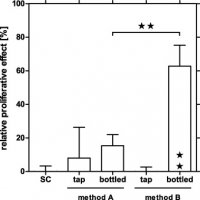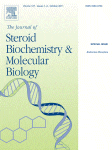miquelangeles
Member
- Joined
- Mar 18, 2021
- Messages
- 928

Identification of Putative Steroid Receptor Antagonists in Bottled Water: Combining Bioassays and High-Resolution Mass Spectrometry
Endocrine disrupting chemicals (EDCs) are man-made compounds interfering with hormone signaling and thereby adversely affecting human health. Recent reports provide evidence for the presence of EDCs in commercially available bottled water, including steroid ...
An increasing number of in vitro studies reports the presence of EDCs in bottled water [12], [13], [14], [15], [17]. With previous studies focusing on estrogenicity, the present work provides evidence for an additional contamination with steroid receptor antagonists. Using an optimized extraction procedure, we detected antiestrogens and antiandrogens in the majority of analyzed bottled water products. Moreover, the antagonist activity was very potent. An equivalent of 3.75 mL bottled water inhibited estrogen and androgen receptor by up to 60 and 90%, respectively. By deriving bio-equivalents [26], this inhibition can be set in relation to the pharmaceutical antiandrogen flutamide that was used as reference compound in the YAAS (Fig. S8). For the most active samples, the inhibition corresponds to a theoretical concentration of 5.25 mg flutamide equivalents L−1. In concordance with our findings, Plotan et al. [16] recently reported antiandrogenicity in one third of the analyzed bottled waters. Here, samples inhibited androgen receptor by approximately 15–70% with the highest activity detected in flavored products.
Similar to our previous study [17], an optimization of the extraction procedure was necessary to isolate steroid receptor antagonists from bottled water effectively. This demonstrates that some commonly used sample preparation techniques are either ineffective in extracting EDCs in quest or effective in coextracting estrogens and antiestrogens that mask each other’s effects. Both scenarios produce false-negative results and might explain the inability to detect endocrine activity in bottled water [18].
From a broader perspective, bottled water from six different countries has been found to contain estrogenic [12], [13], [14], [15], [17], antiestrogenic, and antiandrogenic (this study), as well as androgenic, progestagenic, and glucocorticoid-like chemicals [16]. This demonstrates that a popular beverage is contaminated with diverse-acting EDCs. However, none of the causative chemicals has been identified to date, hindering an evaluation of the toxicological relevance of these findings.



